Beginner's Guide to Surfing
Below is a beginner’s guide to surfing, made up of a list of tips and tricks to help newbies learn to surf online.
Enlist the Help of an Experienced Teacher
To avoid injuring both yourself and those around you in the water, reach out to a friend or teacher with excellent surfing know-how. This will get you started on the right foot as it ensures that you master the fundamentals of surfing before acquiring any bad riding habits. It's also going to make the learning process much faster!
Land It
Before jumping into the water, take a moment to stand on the beach and observe the environment, the conditions of the water, and the surfers who are already riding the waves. Additionally, practice your surfing form on the shore to help find your balance--especially the transition from prone to standing so you position yourself on the board properly. You want to stand perpendicular to the surfboard, in either "goofy" (right foot forward) or "regular foot" (left foot forward) stance. The sweet spot where you stand is typically just behind the center of the board.
Invest in a Soft Top (....preferably a Rock-It!)
As a beginner, you may be surprised with the amount of time you’ll be sitting on your board, rather than standing on it. As opposed to other types of surfboards, the foam top surfboards are an easier and safer choice for new surfers because of their super buoyant and cushion-like exterior. A soft top board has much more volume than a similar sized fiberglass design, meaning more float and an easier time catching waves. Foam boards are easy to paddle, easy to ride, injury-resistant and won't break the bank! And when you fall (as, inevitably when beginning, you will), coming in contact with a soft board is much more preferable than a fiberglass board with sharp fins and hard rails!
Opt for Small Waves
Go for small waves first! You may have big dreams of surfing humongous waves sooner rather than later. Remind yourself that it’s important to start off your training experience with beach surroundings that are appropriate for beginners. Small and glassy is best--look for early morning offshore winds to make things easier on yourself. A low or low-incoming tide is also preferable. It generally gives smaller waves a better push (so you can catch them easier), and you have the possible benefit of standing on a sandbar which also helps to make everything easier. Glassy ocean conditions help you read the waves much better.
The best conditions for success:
-sand bottom
-lower tide
-small waves (under waist high)
-thin crowds
-glassy conditions (light offshore winds)
These are more often than not early morning conditions--especially for the offshore winds and lower crowds.
Mess Up (It’s Okay!)
When it comes to surfing, you can count on the phrase “practice makes perfect.” As you start out, you’ll fall off your board countless times. It’s okay! Embrace it, keep trying, and you’ll get the hang of it! Surfing is a metaphor for life in general. It is challenging to start at first, but as you make small improvements you'll find them extremely gratifying.
Enjoy the Ride
Surfing is meant to be an exhilarating and fun experience! If you’re having a blast on the water, everything else falls into place. After you've mastered riding straight in, take the next step and try and go "down the line". This is easiest to do with your feet facing the wave (i.e. front side). Use the length of the rail on the surfboard as your edge on the wave. Keep the board planing evenly, with your weight towards the middle of the board & the board nose out of the water. Then start working on backside...and enjoy the ride!
Hopefully this Beginner’s Guide to Surfing provided some useful takeaways to help you to learn to surf online! Now you have the smarts, get out there and put them to practice!
We work with a lot of surf camps...please feel free to contact us for any referrals to your area!
